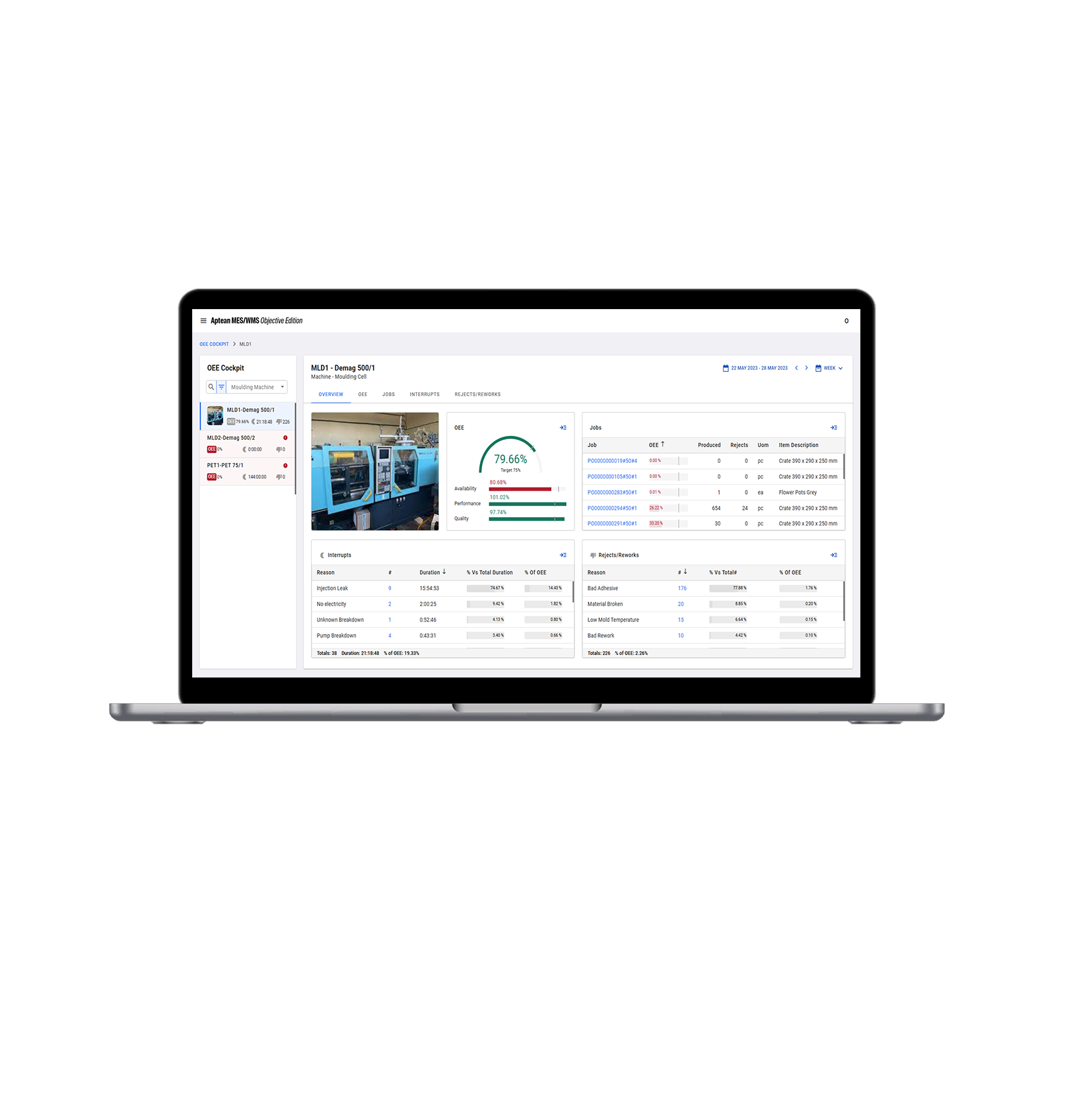6 Ways the SaaS Model Enables a Stronger Business
6 Ways the SaaS Model Enables a Stronger Business
6 Ways the SaaS Model Enables a Stronger Business
5 Nov 2021
 Aptean Staff Writer
Aptean Staff Writer 
Enterprise software is moving away from on-premise options. The future is digital.
According to Gartner, 80% of businesses will shut down their traditional data centers by 2025, compared to just 10% in 2018. These legacy systems require heavy investments, lots of maintenance and are difficult to modernize.
The popularity of software as a service (SaaS) environments has fueled interest in cloud migration. The lure of improved services at reduced IT costs makes SaaS platforms a desirable business model. According to SaaS magazine, the SaaS industry is expected to exceed $130 billion by the end of 2020.
Shifting to SaaS is a big decision. It's an overhaul of "how work was always done." But for businesses looking to compete in today's digital landscape, the time to move is now. If you're still on the fence about SaaS, consider these six benefits for your business.
1. Reduced IT Costs
SaaS platforms are more desirable than on-premise because they eliminate the need to invest in hardware, expensive software licenses (like database, OS, security monitoring and endpoint protection) and reduce the time needed for implementation.
Less hardware means less to maintain. There's little to no hardware with a cloud model—everything you need to operate lives in the cloud. Most of the hardware and infrastructure you need to run in the cloud belongs to your vendor, significantly decreasing your overall IT costs. SaaS platforms only incur a monthly subscription fee, with the provider maintaining and servicing your plan.
2. Removed IT Burden
IT teams are strapped for time and resources.
Successfully managing an enterprise technology system requires fully managing system updates, troubleshooting problems and addressing the ever-evolving business need to expand. SaaS solutions alleviate this burden and require less time to manage the software. The vendor primarily handles any change in the system or need for an update.
IT teams now have time to focus on strategic initiatives and other business areas that require their attention.
3. Automated Upgrades and New Features
When it comes to upgrading your software, often, the process is costly and time-consuming. An upgrade that requires a lot of customizations and configurations, for example, can take as long as six months per facility, which is similar to the time frame of an implementation. Because of this, it's common for businesses only to upgrade every 2-4 years, and sometimes it's even longer than that.
With SaaS, it's so much easier for businesses to upgrade and take advantage of new features and functionality more frequently. The vendor is responsible for maintaining, managing and updating the software. It is their job to ensure the technology can execute the business needs and expectations, and if an issue arises, it's the vendor's responsibility to resolve it quickly.
And because it's easier and more of the ownership is on the vendor, the business can upgrade more frequently and gain access to the latest features and functionalities.
4. Ease of Mobility
Work environments have moved beyond the brick-and-mortar office. Where on-premise solutions are only accessible on-site, SaaS is available wherever there's an internet connection.
You can access your data from any device—tablet, cell phone, laptop, etc.—no matter your location. This kind of solution ensures that employees can see their data in real-time, allowing employees to use that up-to-date information for more confident decision-making.
5. Increased Data Security
According to CloudVision 2020: The Future of the Cloud, 66% of IT professionals cite security as their top concern when adopting an enterprise cloud computing strategy.
The SaaS model enables the team responsible for system maintenance to isolate risks and ensure you recover quickly with minimal data loss in the unlikely event of a data breach. The challenge of staying ahead of hackers increases daily, so it is vital to have a dedicated team guarding your operational infrastructure. The cloud offers the most effective and affordable way to manage your enterprise data security strategy.
6. Scale to Fit
SaaS solutions can facilitate seamless workflow expansion for businesses that experience gradual and rapid growth. In these environments, the SaaS model becomes vital. Most on-premise solutions cannot process significant, sudden upticks in transaction volume at once and will require additional capacity to scale up as your business grows.
And because there's so much innovation in the cloud, software providers can change, improve and adjust your SaaS architecture much quicker than with a traditional server-based application. This enables fast scalability, and there's less time dedicated to provision and reduced recovery time objective (RTO) in the instance of a disaster. SaaS's greater flexibility enables the system to grow with the company in real-time and change as needed.
SaaS for Success
Bottom line: adopting SaaS solutions allows your team to be more productive, your data to be more secure, and your business to grow and change as demand does. As more companies trust the cloud as a base for their enterprise solutions, adopting a SaaS model will be table stakes for success.
Ready for SaaS? Reach out, now.
Beginnen Sie noch heute mit der Transformation Ihres Unternehmens
Sie möchten Ihr industrielles Fertigungsunternehmen weiterentwickeln? Wir helfen Ihnen gerne dabei.



